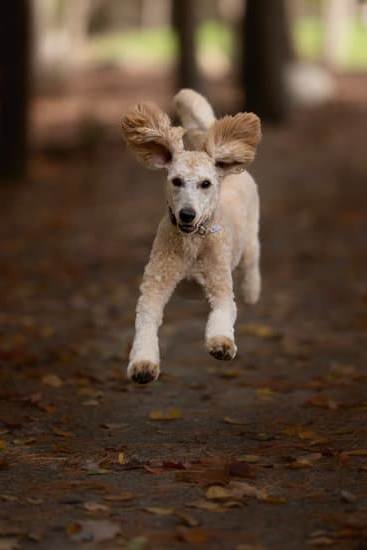Is your dog failing to alert you when someone is at the door? Understanding how to train a dog to bark at the doorbell can be essential for many pet owners.
Doorbell training not only helps improve your dog’s alertness but also enhances their overall obedience and responsiveness to commands. In this article, we will explore the importance of doorbell training for dogs and provide a step-by-step guide on how to effectively train your dog to bark at the doorbell.
Many pet owners underestimate the significance of doorbell training for their dogs. Not only does it serve as a practical way for your dog to notify you of visitors, but it also contributes to their mental stimulation and fulfillment. Properly trained dogs exhibit better behavior in various scenarios, making them more reliable companions both at home and in public settings.
Before delving into the specific techniques for training your dog to bark at the doorbell, it’s important to prepare yourself with necessary tools and treats. Positive reinforcement is key in this process, so having high-value treats and a clicker or other reward marker will be essential.
In the following sections, we will discuss in detail the step-by-step guide to teaching the “speak” command and incorporating the doorbell into the training process. Stay tuned for valuable insights on how to successfully implement doorbell training for your furry friend.
Preparing for Training
Before beginning the process of training a dog to bark at the doorbell, it is essential to gather the necessary tools and treats for a successful training session. One important tool is a clicker, which can be used as a signal to mark the moment when the dog performs the desired behavior.
In addition, having high-value treats on hand is crucial for motivating the dog during training sessions. These treats should be especially enticing to the dog, such as small pieces of cooked chicken or cheese.
Another useful tool for doorbell training is a leash, which can be used to prevent the dog from running away or becoming distracted during training. It is also beneficial to have a quiet environment without too many distractions, especially when beginning the training process. This will help your dog focus and respond better to your commands.
It’s important to keep in mind that each dog is unique and may respond differently to various tools and treats. Some dogs may be motivated by toys or praise instead of treats, so it’s essential to find what works best for your specific dog. Additionally, patience and consistency are key when preparing for training – be prepared for it to take time and effort before you see significant progress in your dog’s doorbell response.
| Tools | Treats |
|---|---|
| Clicker | High-value treats (cooked chicken or cheese) |
| Leash | Toys or praise |
Step-by-Step Guide to Teaching the Speak Command
Training your dog to bark at the sound of the doorbell can be a useful skill, especially if you want them to alert you when someone is at the door. The first step towards achieving this is teaching your dog to speak on command. This section will provide a step-by-step guide to training your dog to bark on cue, which will then be incorporated into doorbell training.
To start, it’s important to understand that some dogs may naturally bark more than others, while some may not bark at all. However, teaching the speak command can help control when your dog barks and can also be a fun way for you and your furry friend to bond.
Here are steps to teach the speak command:
- Begin by getting your dog’s attention with a treat.
- Once they are focused on you, hold the treat in front of their nose but out of reach.
- When they try to get the treat, they will likely bark – immediately say “speak” or “bark” in a firm but gentle tone.
- As soon as they make any sound, praise them and give them the treat.
- Repeat this process several times until your dog starts associating the word “speak” with barking.
Once your dog has mastered this command, you can move on to incorporating it into doorbell training. Remember that patience and consistency are key when it comes to training any new behavior in dogs.
Incorporating the Doorbell Into the Training Process
Gradual Exposure and Desensitization
One of the key steps in incorporating the doorbell into your dog’s training process is gradual exposure and desensitization. This means introducing the sound of the doorbell to your dog in a controlled and gradual manner so they can become familiar with it without feeling overwhelmed.
Start by playing recordings of doorbell sounds at a low volume while rewarding your dog for staying calm. As they become more comfortable, gradually increase the volume and eventually move on to using an actual doorbell.
Pairing the Doorbell With the Speak Command
Once your dog is accustomed to the sound of the doorbell, you can start pairing it with the “speak” command that you have already taught them. Every time you give the command for them to speak, ring the doorbell immediately after. This association will help your dog understand that barking at the doorbell is desirable behavior.
Reinforcing Desired Behavior
As your dog starts to exhibit appropriate behavior by barking at the doorbell when given the “speak” command, it’s important to reinforce this behavior. Use positive reinforcement such as treats or praise every time they bark at the doorbell on command. This will help solidify their understanding of what is expected of them when they hear the sound of the doorbell.
Incorporating the doorbell into your dog’s training process can be a challenging but rewarding experience. With gradual exposure, pairing with commands, and consistent reinforcement, your furry friend can learn to alert you when someone arrives at your doorstep in no time.
The Importance of Consistency in Training
Consistency is key when it comes to training a dog to bark at the doorbell. Dogs thrive on routine and repetition, so it’s important to be consistent with the training process in order for them to effectively learn the behavior. Whether you are using positive reinforcement or clicker training, consistency in your approach will help reinforce the desired behavior in your dog.
Consistency involves setting clear rules and expectations for your pet. For example, if you only want your dog to bark once at the doorbell and then quiet down, it’s important to consistently reinforce this behavior. Inconsistency can lead to confusion for your pet and may result in mixed signals about what is expected of them.
In addition, consistency also applies to timing and frequency of training sessions. Regular, short training sessions will be more effective than sporadic or lengthy ones. By consistently practicing the speak command and incorporating the doorbell into the training process on a regular basis, your dog will be more likely to learn and retain the behavior over time.
Tips for Addressing Over-Barking or Excessive Barking
When training a dog to bark at the doorbell, it is important to address over-barking or excessive barking to ensure that the behavior remains controlled and regulated. One effective approach to addressing this issue is through the use of positive reinforcement. By rewarding the dog with treats and praise when they exhibit the desired behavior of barking once or twice at the doorbell, you can help them understand what is expected of them without resorting to punishment.
Another tip for addressing over-barking or excessive barking is to provide mental and physical stimulation for your dog. Oftentimes, barking excessively at the doorbell can be a result of boredom or pent-up energy. Engaging your dog in regular exercise and providing them with interactive toys can help channel their energy in a productive way, reducing their tendency to over-bark when the doorbell rings.
Consistency in training is crucial when dealing with over-barking or excessive barking. It is important for all members of the household to be on board with the training process and enforce the same rules. In addition, establishing a consistent routine for your dog can help minimize anxiety and reduce their likelihood of over-barking in response to triggers such as the doorbell.
| Tips | Description |
|---|---|
| Positive Reinforcement | Rewarding the dog with treats and praise for exhibiting desired behavior. |
| Provide Stimulation | Engaging in regular exercise and using interactive toys. |
| Consistency | All members enforcing the same rules and establishing a consistent routine. |
Troubleshooting Common Challenges in Doorbell Training
When training a dog to bark at the doorbell, there may be some common challenges that arise during the process. It’s important to address these challenges in order to ensure successful and effective training. Here are some common challenges you may encounter, as well as tips for troubleshooting them:
- Lack of Interest or Motivation: Some dogs may not initially show interest in learning to bark at the doorbell. In this case, it’s important to find what motivates your dog, whether it’s treats, toys, or praise.
- Fear or Anxiety: Your dog may exhibit fear or anxiety when hearing the doorbell, which can hinder the training process. To address this, start by desensitizing your dog to the sound of the doorbell by playing it at a low volume and gradually increasing it over time.
- Distraction: Dogs often get easily distracted, especially during training sessions. To combat this challenge, find a quiet and familiar environment to conduct your training sessions and limit any potential distractions.
By recognizing and addressing these common challenges in doorbell training, you can set your dog up for success and ensure a positive training experience.
It’s also important to keep in mind that every dog is different, so what works for one pup may not work for another. Be patient with your furry friend and don’t be discouraged if progress is slow – consistency is key when it comes to training. With patience and persistence, you can overcome these challenges and successfully train your dog to bark at the doorbell when needed.
Enforcing the Behavior
Using Treats and Positive Reinforcement
When enforcing the behavior of barking at the doorbell, treats can be a powerful tool. Whenever your dog successfully barks at the doorbell on command, immediately reward them with a small treat. This positive reinforcement helps to solidify the connection between the “speak” command and the action of barking at the doorbell.
Consistency Is Key
Consistency is crucial when enforcing this behavior. It’s important for all members of the household to be on board with reinforcing this training. If someone comes to your house and your dog barks at the doorbell on command, make sure they also give your pup a treat or praise. This consistency will help reinforce the behavior and prevent any confusion for your dog.
Using Reinforcement Tools
In addition to treats and praise, there are several reinforcement tools that can aid in enforcing this behavior. For example, you can use a clicker to signal to your dog that they have performed the desired behavior correctly. Using these tools in combination with treats and praise can further solidify their understanding of what is expected when they hear the doorbell.
Frequently Asked Questions
How Do I Desensitize My Dog to the Doorbell?
Desensitizing your dog to the doorbell involves gradually introducing the sound of the doorbell at a low volume while simultaneously providing positive reinforcement, such as treats or praise, to create a positive association. Over time, you can gradually increase the volume of the doorbell while continuing to reinforce calm behavior from your dog.
How Do I Teach My Dog to Bark at the Door?
Teaching your dog to bark at the door can be done by first teaching them to speak on command. Once they understand this command, you can use it in specific situations, such as when someone is at the door.
With consistent training and reinforcement, your dog will learn to bark on cue when they hear someone approaching or knocking on the door.
How to Stop My Dog From Going Crazy When Someone Comes to the Door?
To stop your dog from going crazy when someone comes to the door, it’s important to train them to remain calm and controlled in these situations. This can involve teaching them alternative behaviors, such as sitting or going to a designated spot when someone arrives.
Additionally, desensitization techniques and gradual exposure to different scenarios involving visitors can also help reduce their excitement or anxiety during these times.

Welcome to the blog! I am a professional dog trainer and have been working with dogs for many years. In this blog, I will be discussing various topics related to dog training, including tips, tricks, and advice. I hope you find this information helpful and informative. Thanks for reading!





